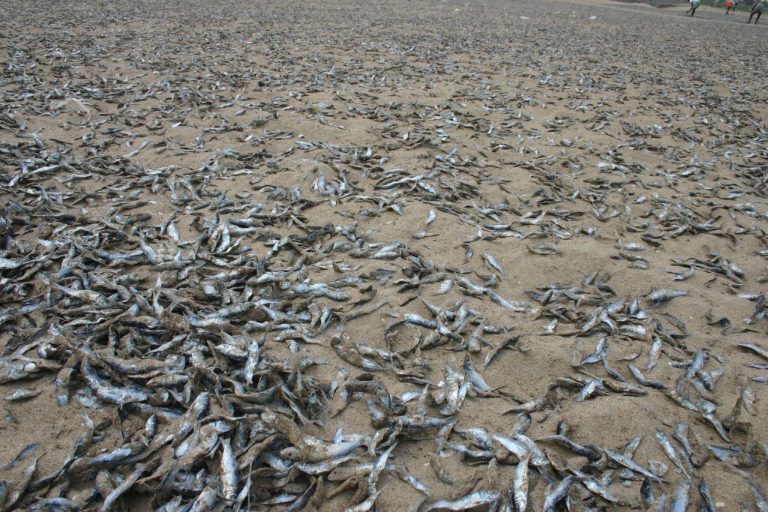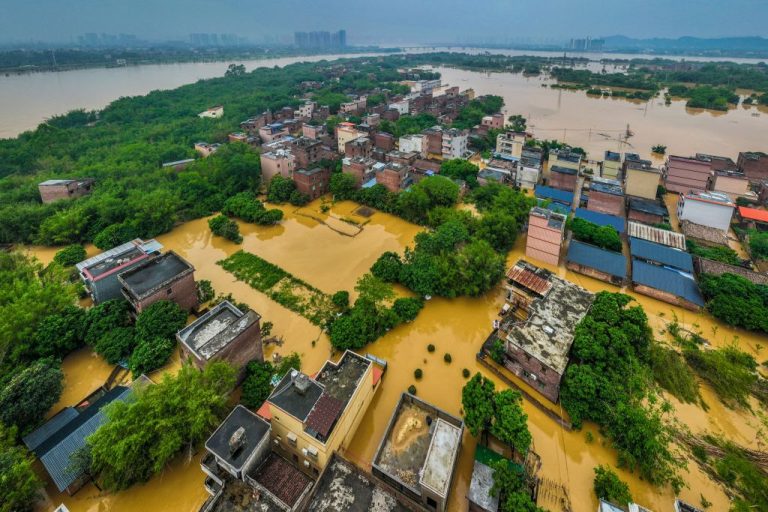Two recent environmental crises are challenging leaders in Florida and three provinces of Canada to find solutions, while new problems arise and the threat grows more serious.
Water contamination brought hundreds of tons of dead sea animals to shore in the southeast, while the northwest suffers water shortages due to an unprecedented heat wave.
Oceanic cleanup in Florida
St. Petersburg, Florida is dealing with massive quantities of dead fish along the shoreline. A huge red tide, caused by an abnormal amount of microscopic algae built up in the water, is said to be the cause of this sudden massacre of marine life.
Some experts have guessed that contamination from a toxic pond leak at the Piney Point reservoir earlier this year contributed to the growth of the red tide, and recent tropical storms from Hurricane Elsa may have blown the algae towards the marine life.
Aside from a blanketing of dead fish, other animals such as dolphins, sea turtles, and stingrays were also found amongst the dead. The dead marine animals are being moved to the county incinerator and landfills, as reported by Axios.
Success
You are now signed up for our newsletter
Success
Check your email to complete sign up
In addition to the terrible toll the tide took on marine life, the red tide could also have its effects on the citizens of St. Petersburg.
“For people with severe or chronic respiratory conditions, such as emphysema or asthma, red tide can cause serious illness,” said the Florida Fish and Wildlife Conservations Commission (FWC) as reported by Newsweek.
The city has been spending lavishly to clean up the shoreline, approximately $61,000 a day to remove some 800 tons of dead fish, but those resources are quickly being depleted.
The mayor of St. Petersburg and City Council members have thus requested that Governor Ron DeSantis (R) declare a state of emergency. His office rejected the request, stating the Department of Environmental Protection can still afford to sustain the crisis.
“The City does not have budgeted funds to tackle the crisis,” Public Works Administrator Claude D. Tankersley said to Newsweek. “Help from the State of Florida is critical if we are going to continue to be the frontline on this devastating event.”
With the situation becoming more tense, protestors have begun demonstrations at the city waterfront to cry out their frustrations to DeSantis.
“This is not political,” said Aimee Conlee, who ran the event, as she spoke to protestors. “This is life. This is water, and water is life.”
Agriculture threatened by heatwave
Meanwhile up north, a heat wave that struck Canada has so parched the countryside that agricultural production has already suffered losses between 25, 50, and even an expected 100 percent in some areas.
The heat wave began in the village of Lytton in British Columbia, with a high temperature recorded at 49.6°C (121.8°F). It has since spread across British Columbia, Alberta, and Saskatchewan.
In the wake of its expansion, farmers across the area are scrambling to keep their crops from withering from heat and dehydration. Much of their expected yield has already been lost due to lack of moisture caused by the heat wave.
As reported by Todd Lewis, head of Agricultural Producers Association of Saskatchewan, to Financial Post, the large open fields of bright yellow canola crops that grew along Highway 6 have become brown and faded green instead.
Another farmer said that the year’s crops are “beyond the point of no return.” It is also expected that the canola yield would be struck hard with a 25 percent reduction even if the rain comes. Otherwise, if the drought continues, it will get worse at about 50 percent.
“There’ll be acres in Western Canada that will have zero crop come off, zero yield,” he expressed.
Other than food crops, the feed sources for livestock in Canada are also at risk, leaving ranchers to rely on their winter supplies.
“If we don’t have water, and if we don’t have feed, there’s not much choice, right?” said Lewis, fearing that farmers would soon have to selectively eliminate their livestock.













